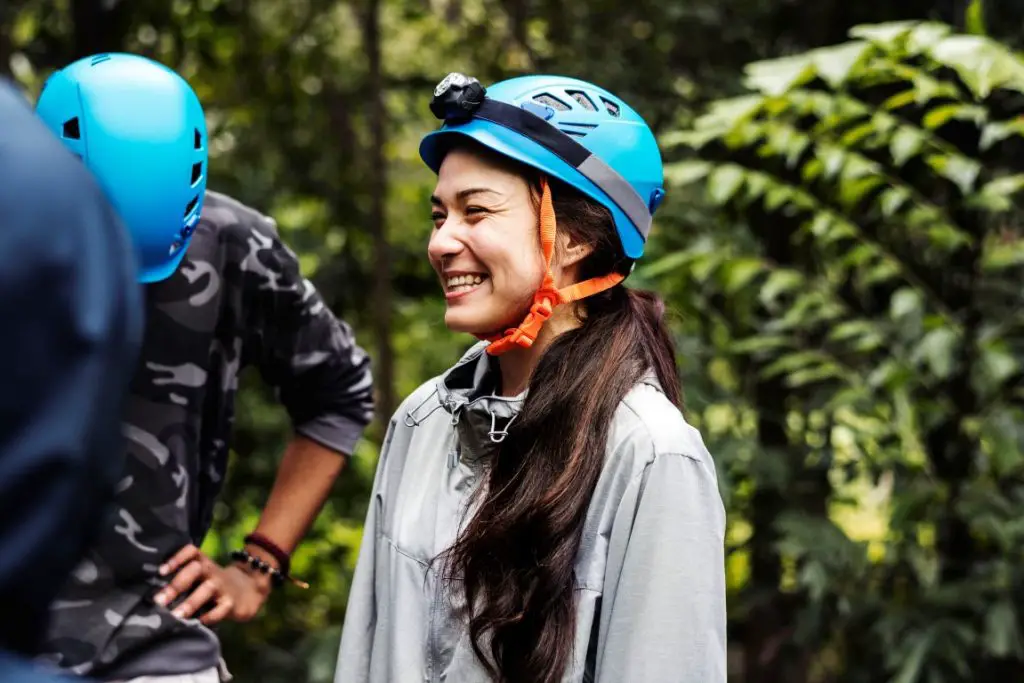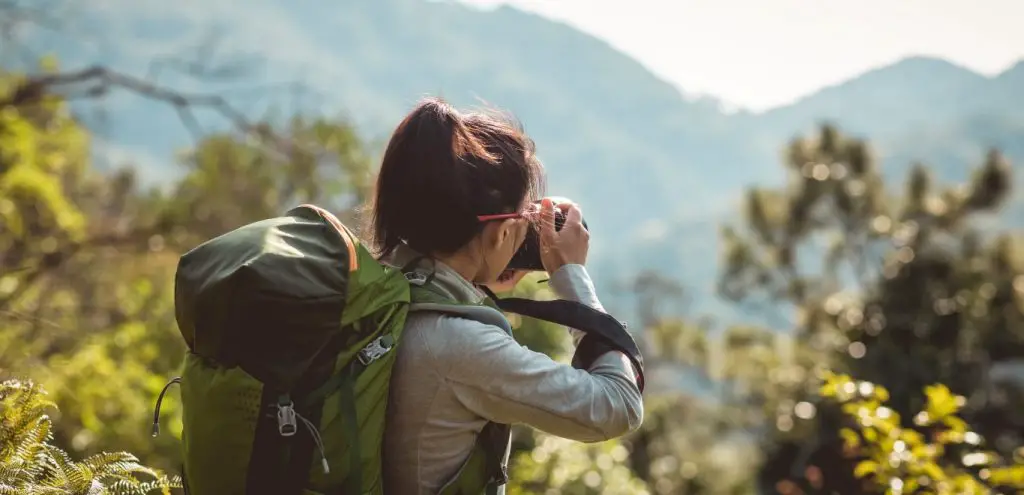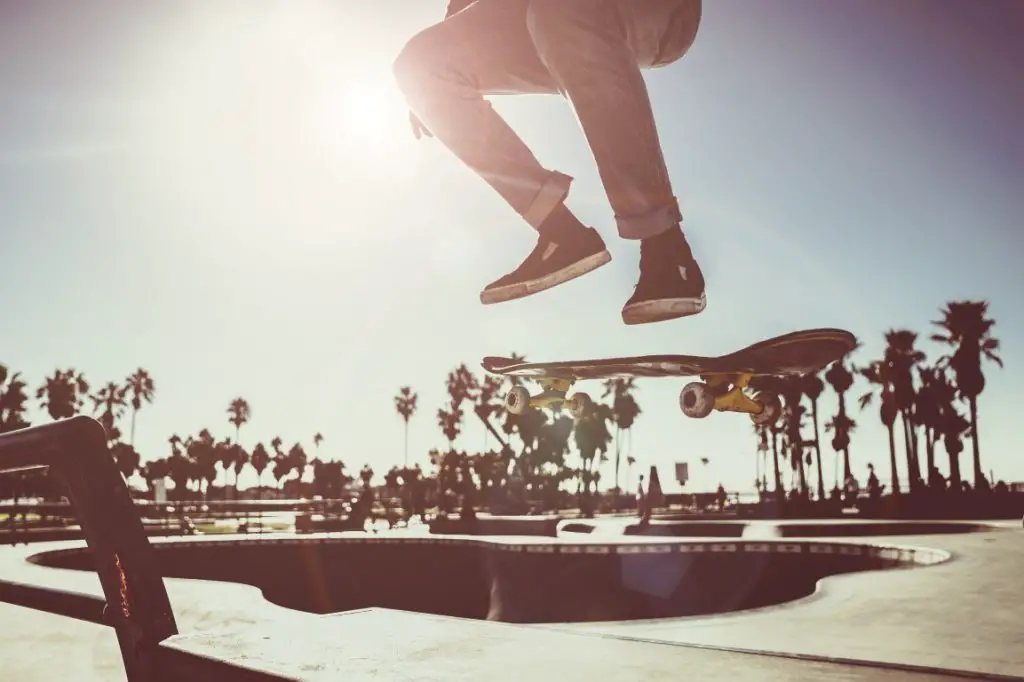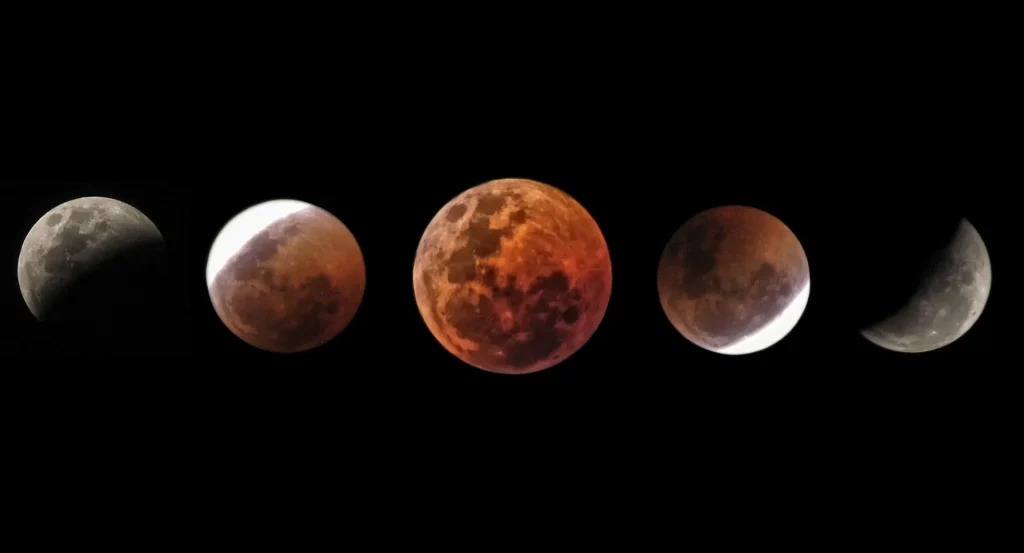
As an avid photographer and astronomy enthusiast, capturing the beauty of a lunar eclipse has always been a thrilling experience for me.
The key to capturing breathtaking lunar eclipse photos lies in understanding and mastering the right camera settings.
In this article, I will provide you with a comprehensive guide on lunar eclipse camera settings, enabling you to capture stunning photos that truly showcase the magnificence of these celestial events.
Essential Equipment for Lunar Eclipse Photography
As an experienced astrophotographer and astronomy enthusiast with over 5 years of capturing stunning lunar eclipse photos, I am excited to share my knowledge and insights with you.
So, let’s start.
A lunar eclipse occurs when the Earth passes between the Sun and the Moon, causing the Moon to fall into the Earth’s shadow.
This captivating astronomical phenomenon results in a dramatic change in the Moon’s appearance, making it a prime subject for astrophotography.
By understanding the different phases of a lunar eclipse – penumbral, partial, and total – you can plan your photography session accordingly and capture the eclipse at its most visually striking moments.
Capturing stunning lunar eclipse photos requires the right equipment that enables you to adjust camera settings with precision.
When photographing a lunar eclipse, having a DSLR or mirrorless camera is ideal due to their manual settings, granting you full control over exposure and other essential parameters.
These settings play a crucial role in capturing the intricate details and mesmerizing colors of a lunar eclipse.
A sturdy tripod is another indispensable piece of equipment for lunar eclipse photography. It ensures stability during long exposures, minimizing the risk of blurriness and resulting in sharp and clear images.
Additionally, investing in a remote shutter release or intervalometer allows for hands-free operation, reducing the chances of camera shake and further enhancing the overall image quality.
Recommended Tool Kit for Lunar Eclipse Photography
Here I’m going to tell you about the gear I use to photograph a lunar eclipse in my astrophotography journey.
Camera: Nikon D850 and Canon EOS 5D Mark IV. These cameras offer advanced features, exceptional image quality, and the flexibility to adjust settings to your specific needs.
Lens: Nikon AF-S NIKKOR 70-200mm f/2.8E FL ED VR and Canon EF 100-400mm f/4.5-5.6L IS II USM. Using these lenses you can capture stunning close-up shots of the moon during a lunar eclipse.
By the way, you can get solid knowledge about the best lenses for moon photography by referring my article on best lenses for moon photography.
Tripod: A tripod like the Manfrotto 055 Carbon Fiber Tripod provides excellent stability and durability, ensuring your camera remains steady throughout the duration of the eclipse. This is particularly crucial when using longer exposure times to capture the moon’s details.
In my own astrophotography journey, I have found the combination of these recommended cameras, lenses, and tripods to be invaluable for capturing breathtaking lunar eclipse photos.
Their high-quality construction and precise adjustments allow for unparalleled control over camera settings, resulting in stunning and captivating images of lunar eclipses
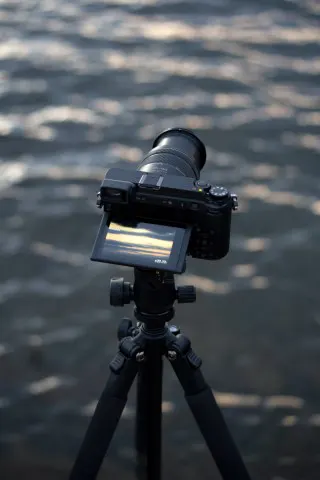
Camera Settings for Lunar Eclipse Photography
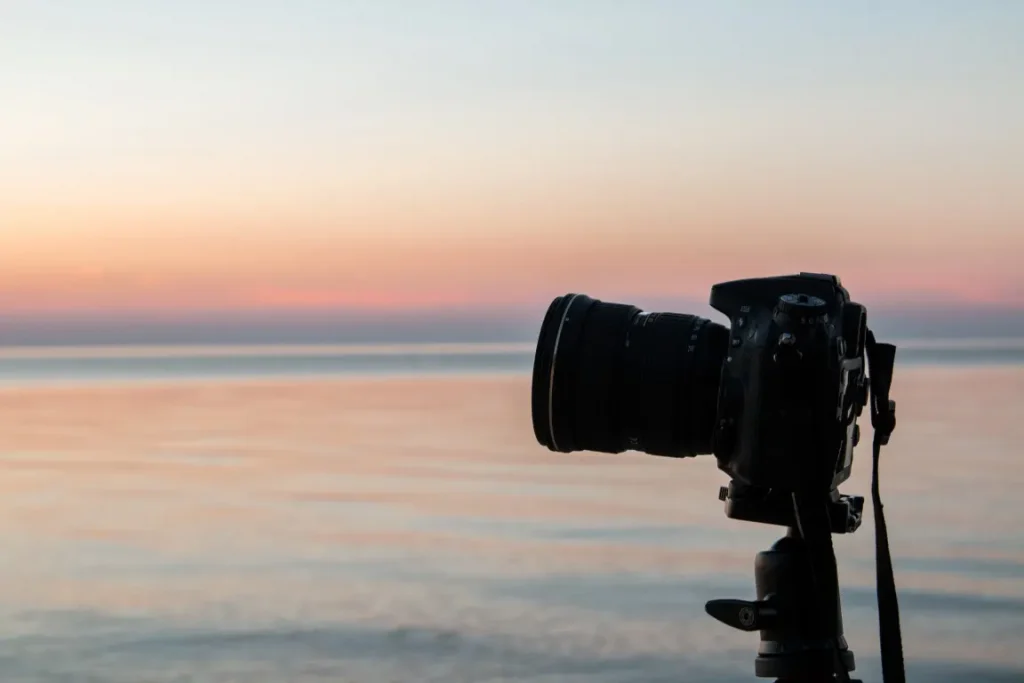
Now, let’s dive into the camera settings that will enable you to capture stunning lunar eclipse photos.
If you shoot in manual mode gives you full control over exposure, allowing you to make precise adjustments. So, keep in mind always use manual mode on your lunar imaging.
Here I list down essential camera settings:
ISO
The appropriate ISO sensitivity for capturing a lunar eclipse depends on various factors such as aperture, shutter speed, and the clarity of the night sky. To begin, it is recommended to set your ISO at 200 as a starting point. Adjust the ISO higher or lower accordingly if your images are under or overexposed, respectively.
Aperture
For capturing a lunar eclipse, it is advisable to set your aperture to f/8 to achieve a desirable depth of field. In this case, it’s better to start with the lowest ISO available on your camera, such as 100 or 200.
When photographing a bright moon, a shutter speed of approximately 1/125th to 1/250th of a second is usually suitable. However, as the eclipse begins, this exposure setting will effectively capture the bright side of the moon while obscuring the dark side.
Therefore, achieving proper exposure becomes a delicate balance between revealing the dark side of the moon without excessively overexposing the bright side and losing its definition.
Shutter Speed
During the penumbral and partial phases of a lunar eclipse, use a faster shutter speed, around 1/125th to 1/250th of a second, to avoid overexposure.
As the eclipse progresses to the total phase, longer exposures are needed to capture the moon’s details. Experiment with shutter speeds ranging from a few seconds to several minutes to achieve the desired effect.
File Format
Capture your lunar eclipse photos in RAW format. RAW files contain uncompressed data and offer greater flexibility in post-processing, allowing you to make adjustments without sacrificing image quality.
Shooting in RAW preserves the maximum amount of information captured by your camera’s sensor, giving you more control over exposure, white balance, and other settings during post-processing.
Experiment with these camera settings and don’t be afraid to adjust them as the lighting conditions change during different phases of the lunar eclipse.
When shooting a lunar eclipse you should remember to keep an eye on your histogram to ensure proper exposure, and take test shots to fine-tune your settings.
You’ll be able to capture stunning lunar eclipse photos that showcase the awe-inspiring beauty of these celestial events with practice and patience.
With this comprehensive guide on lunar eclipse camera settings, I aimed to empower fellow photographers and astronomy enthusiasts to capture breathtaking photos that truly showcase the magnificence of these celestial phenomena.
Composing a lunar eclipse photograph
While camera settings play a vital role, composition and framing are equally important in lunar eclipse photography. Experiment with different angles, perspectives, and focal lengths to create captivating compositions.
Consider incorporating elements such as foreground objects, silhouettes, or landmarks to add depth and interest to your lunar eclipse photos.
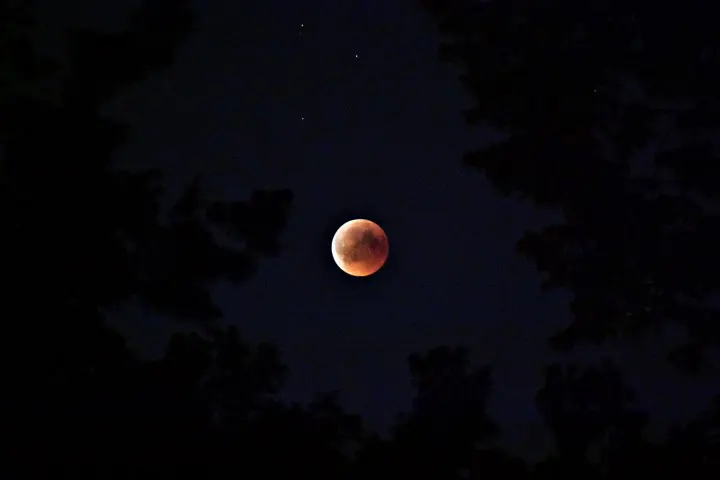
The rule of thirds can also be applied, placing the moon off-center for a more visually pleasing composition.
Exposure Bracketing and HDR Techniques for Lunar Eclipse
For challenging lighting conditions during a lunar eclipse, consider using exposure bracketing and HDR (High Dynamic Range) techniques.
By taking multiple shots at different exposure levels and merging them later in post-processing, you can retain details in both the moon’s bright surface and the surrounding sky.
This technique allows you to capture a wider range of tones and create more balanced and dynamic images.
To implement exposure bracketing and HDR techniques, you will need software that supports these capabilities. Here I have listed a few popular options that you can use:
Adobe Lightroom: Lightroom offers a built-in HDR feature that allows you to merge multiple exposures and create stunning HDR images.
Simply you can select your bracketed shots and use the “Merge to HDR” option to combine them into a single image with enhanced dynamic range.
Photomatix Pro: Photomatix Pro is a dedicated HDR software. It provides advanced tools for merging bracketed exposures and creating HDR images. It offers various tone-mapping algorithms and allows for fine-tuning of settings to achieve the desired look.
General Tips for Photographing Lunar Eclipse
Photographing a lunar eclipse requires careful planning and preparation to capture the celestial phenomenon with stunning results.
In this section, I will bring some general tips that will enhance your lunar eclipse photography experience and help you achieve remarkable images.
Find a Suitable Location:
Choosing the right location is crucial for capturing a lunar eclipse. Look for a spot with a clear view of the sky, away from sources of light pollution.
This will ensure a dark background that highlights the moon during the eclipse.
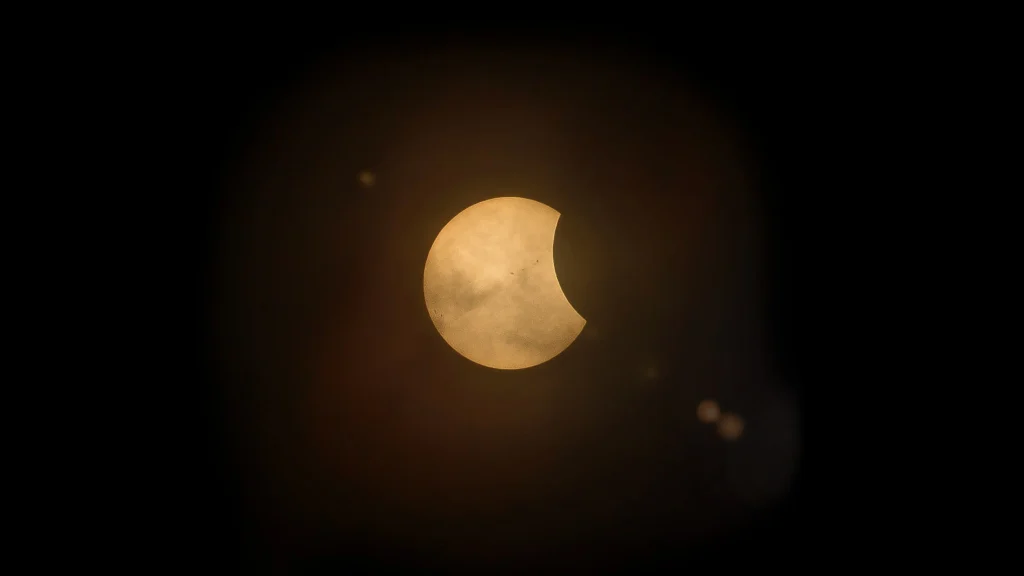
Consider scouting the location beforehand to familiarize yourself with the surroundings and potential composition opportunities.
Check the Weather Forecast:
Monitoring the weather forecast is essential to ensure optimal shooting conditions. Clouds can obstruct your view of the eclipse, so aim for clear skies. Plan ahead and be prepared to adjust your shooting location if necessary to find the best weather conditions for capturing the lunar eclipse
Experiment with Exposure Settings:
Finding the right exposure settings is crucial for lunar eclipse photography. Start with manual mode and adjust your settings based on the lighting conditions during different phases of the eclipse.
During the partial and penumbral phases, you may need to slightly overexpose to capture the moon’s details. As the eclipse progresses to the total phase, you may need to adjust your exposure settings to compensate for the darker conditions.
I’ve already written an article about Astrophotography exposure time. In that article, I shared an A-Z guide on astrophotography exposure time.
Bracket Your Exposures:
To ensure you capture the full range of tones and details, consider bracketing your exposures. Take multiple shots at different exposure levels to have a range of options during post-processing.
This technique allows you to choose the best-exposed image or combine them for HDR processing.
Pay Attention to White Balance:
White balance plays a crucial role in achieving accurate and pleasing colors in your lunar eclipse photos.
Experiment with different white balance settings to match the lighting conditions and the desired mood of your images. Consider using the auto white balance option or manually setting it based on the ambient light.
Take Test Shots and Review:
Throughout the eclipse, take test shots and review them on your camera’s LCD screen. This will allow you to make necessary adjustments to your camera settings, composition, and focus.
Pay attention to any potential issues, such as overexposure or soft focus, and make adjustments accordingly.
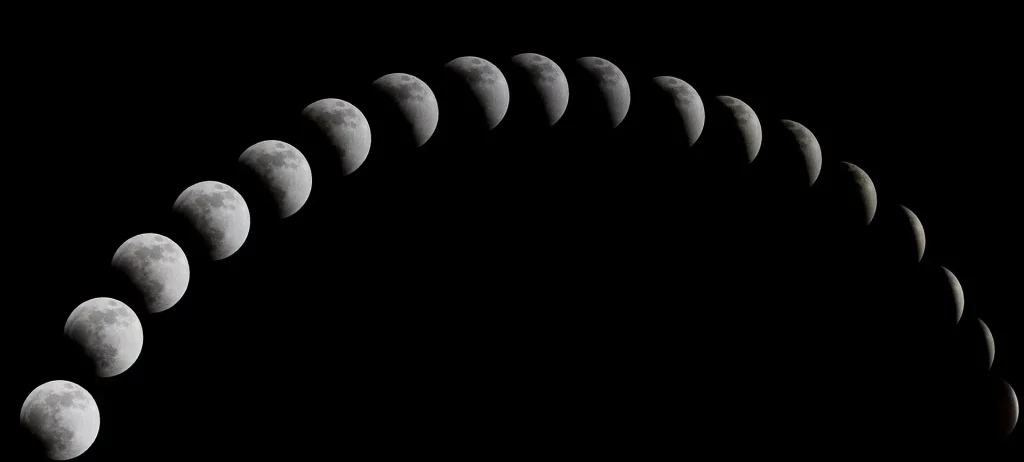
Conclusion
In conclusion, mastering the right camera settings is crucial for capturing stunning lunar eclipse photos that showcase the magnificence of these celestial events.
By understanding the different phases of a lunar eclipse and having the essential equipment such as a DSLR or mirrorless camera, sturdy tripod, and remote shutter release, you can capture the intricate details and mesmerizing colors of the moon.
Adjusting ISO, aperture, shutter speed, and shooting in RAW format will further enhance your results.
Additionally, incorporating composition techniques, using exposure bracketing and HDR techniques, and following general tips for photographing lunar eclipses will take your images to the next level.
With practice, patience, and attention to detail, you can create breathtaking photos that truly capture the awe-inspiring beauty of lunar eclipses.
Justin Parker is a professional photographer and has been in the industry since 2007. He attended the University of Georgia. Justin combines his passion for photography and his interest in writing to give life to this blog which talks about photography in order to help and inspire young photographers.

